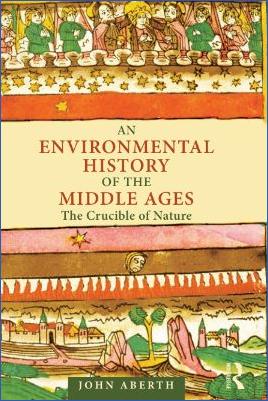
| An Environmental History of the Middle Ages. The Crucible of Nature | |
| History | |
| PDF Book | |
| 345 | |
| 5.43 Mb(s) | |
|
|
| October 8, 2023 | |
| English | |
| Read PDF Book Online | |
| Click to Download the PDF |
An Environmental History of the Middle Ages. The Crucible of Nature
“An Environmental History of the Middle Ages: The Crucible of Nature” delves into a compelling exploration of our planet’s ecological transformation during one of the most intriguing and often misunderstood periods in history. Authored by John Aberth, an esteemed historian specializing in medieval studies, this meticulously researched and thought-provoking book sheds light on the role of the natural world in shaping the Middle Ages.
Transporting readers to a time often associated with knights, castles, and religious conflict, Aberth reveals a side of the Middle Ages rarely examined—the profound ecological impact this era had on the environment and vice versa. Drawing upon an impressive range of primary and secondary sources, he unveils the intricate relationship between humanity and nature, offering invaluable insights into the medieval mindset and the interconnectedness of all living things.
From dense forests to expansive farmlands, the book takes us on a journey through the diverse landscapes that defined the medieval world. Readers will witness how these landscapes were transformed by human endeavors, such as deforestation, agriculture, and urbanization, as well as how natural phenomena, including climate change, volcanic eruptions, and diseases, shaped human societies and their perception of the environment.
Aberth masterfully intertwines captivating anecdotes, vivid descriptions, and historical analysis to bring the Middle Ages to life. With each page, readers will witness the myriad ways in which medieval societies interacted with their surroundings: the struggle to harness and manage natural resources, the emergence of environmental laws and regulations, and the consequences of environmental degradation on human health and wellbeing.
Moreover, Aberth examines the medieval mindset, exploring how spiritual beliefs, religious practices, and folklore influenced people’s perceptions and treatment of the natural world. By scrutinizing medieval religious texts, folklore, and art, he uncovers a rich tapestry of beliefs and practices that shaped attitudes towards nature, wildlife, and wilderness. Medieval visions of harmony and balance with nature, mingled with fear and awe of its power, adds a layer of depth and nuance to our understanding of the Middle Ages.
As the narrative unfolds, Aberth illuminates the role of the environment in shaping the course of history during this often-overlooked era. Readers will gain insight into the impact of climate fluctuations on agricultural practices, the spread of diseases facilitated by trade routes and urban centers, and the ecological repercussions of wars and conflicts. By connecting these phenomena to wider social, economic, and political developments, Aberth reveals the inextricable link between human history and the environment.
Through Aberth’s compelling writing, “An Environmental History of the Middle Ages: The Crucible of Nature” exposes the consequences of human actions, both intentional and unintentional, on the natural world. Importantly, it challenges our preconceptions about the Middle Ages, dispelling the notion that this was a backward or ecologically ignorant era and instead showcasing the profound ways in which medieval societies shaped their environment, even unintentionally.
This book is not merely a chronicle of the environmental changes of the Middle Ages, but rather a call to action. Aberth prompts readers to reflect on the lessons the past holds for our present and future. By examining how previous societies coped with environmental challenges, he invites us to reconsider our own relationship with nature and to become more conscious of the consequences of our actions. Ultimately, “An Environmental History of the Middle Ages: The Crucible of Nature” serves as a valuable resource and a compelling testament to the intricate and enduring connection between humanity and the environment across time..
Digital screenshot from the PDF Book
To learn more about the book titled: An Environmental History of the Middle Ages. The Crucible of Nature, Click the download button below to get it for free
